The Last Chief John Ross Indian Detachment: Fort Marr , Ocoee River, Hildebrand Landing Hildebrand Landing, Old Federal, Old Fort and King’s Highway
Among the Ross-allied detachments, nine would depart from the agency area traveling overland across Tennessee, Kentucky, southern Illinois, Missouri, and Arkansas to the Indian Territory. One detachment, composed mainly of elderly and sick Cherokees, would travel by river departing from the Agency on the Hiwassee River. Two more would begin from camps near Ross’s Landing and travel northward to join the main route. The last would leave from its camps south of Fort Payne, Alabama and cross Tennessee into Kentucky and on to the west. Figure 3 shows the general routes of removal (King 1999:Section 1, 21-25; Foreman 1956:301-312). [The details of the routes are given in the next section of this report.] The last detachment, led by Peter Hildebrand, departed on November 7, 1838, and John Ross and his family left with this group. The detachments were plagued with high tolls and whites bent on selling whiskey to the Cherokees and swindling them out of their money. There were large numbers of sick among the detachments and constant wagon breakdowns. Morale was low and many Cherokees deserted. The Cherokees had organized their own light horse police force to keep order, but there were not enough of them to deal with the many problems that arose daily. The wagon master for the Elijah Hicks (Second) Detachment died at Woodbury, Tennessee on October 21. Elderly Chief White Path also died near Hopkinsville, Kentucky. Rain made travel on the road difficult, and the thousands of Cherokees traveling the roads caused severe damage and erosion, making travel more difficult for those behind. Severe winter weather came early, and Winfield Scott, traveling northward on military business, commented that he found much snow on Walden’s Ridge and the Cumberland Mountain as early as November 17. Icy conditions on the Mississippi River trapped seven detachments for nearly a month, unable to cross. At Paducah Kentucky, John Ross, traveling with Hildebrand’s (Eleventh) Detachment, met the John Drew Detachment traveling by river. Ross boarded the steamboat Victoria with his family because his wife Quatie was severely ill. Quatie later died on the journey (Moulton 1978:99-1 00) . The Cherokees finally arrived in the new land after a long and arduous journey. Many died as a result of the process of roundup from their homes, their long internment in the stockades during the hot summer, and their difficult journey through severe weather. The most commonly accepted estimate of the number of Cherokee deaths is approximately 4,000. This number may also include those who died during the first year in the west as a result of disease and starvation (Thornton 1991 :83-84). The end of the journey was not the end of the strife that had divided the Cherokees, for the factionalism that had developed before the removal still remained in the new nation. Additionally, the subsistence that was promised to the Cherokees to help them through the initial period in the new land was inadequate and often of inferior quality. John Ross appealed to both Monfort Stokes, the Cherokee Agent in the new territory, and General Matthew Arbuckle, commander of Fort Gibson in the Cherokee Territory, but neither was able to render assistance. Ross was forced to use funds allocated by General Scott so that the Cherokees could buy food and essential supplies (Carter 1976:268). The Western Cherokees welcomed the Easterners to their new home but informed them that they were expected to conform to the established government of the Western Cherokee Nation. Chief John Ross and his assistant George Lowrey insisted that the now re-united bands of Cherokees call a council to form a new government. At a council held at Takatokah in June 1839, Cherokee leaders decided to meet in the following month to form a new government, uniting the Eastern and Western Cherokees (Carter 1976:268-269). On June 22, 1839 a group of Cherokees, bent on revenge against those who supported the Treaty of New Echota, assassinated John Ridge, Major Ridge, and Elias Boudinot. General Arbuckle, believing that Ross knew of the killings beforehand and might even be harboring the murderers, asked Ross to come to Fort Gibson to discuss the incident. Ross refused Arbuckle’s request and hundreds of supporters surrounded Ross’s home for their Chief’s protection (Carter 1976:270- 272). Eventually a new government was formed with its capital at Talequah. John Ross was elected Principal Chief with David Vann, a western Cherokee, as assistant chief. President Martin Van Buren’s administration refused to recognize the Ross government, and former President Andrew Jackson encouraged John Bell and Stand Watie, pro-removal Cherokees, to “lay the tyrant low.” Ross held on to power through trying times during which the Cherokee nation was on the brink of a civil war. Finally in 1846, the U. S. government met with the Western Cherokees, the pro-treaty Eastern Cherokees, and the Ross supporters to sign a treaty of unity.
Under this treaty, the United States finally paid the $5 million owed to the Cherokees under the Treaty of New Echota. There was now relative peace in the Cherokee Nation, and that peace would last until the outbreak of the American Civil War (Carter 1976:272-275).
- https://www.tn.gov/content/dam/tn/environment/archaeology/documents/reportofinvestigations/arch_roi15_trail_of_tears_2001.pdf
- Polk County Christmas Parade Route Shadows the Footsteps of the Historic Cherokee Removal
- The Old Federal Road and the Cherokee Trail of Tears
- Historical Significance of the Tennessee/Georgia Old Federal Road in the Trail of Tears and its Connection to the Church of God
- Ocoee Church of God Celebrates 40 Years


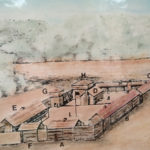
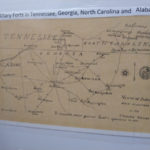

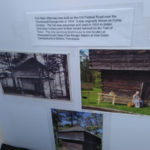
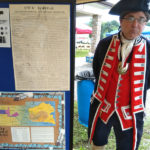
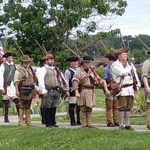






Comments